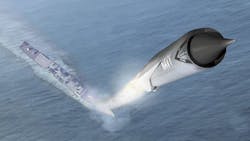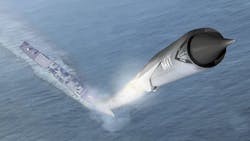Lockheed Martin to develop weapon seeker to attack targets without use of GPS
EGLIN AIR FORCE BASE, Fla. - Munitions experts at Lockheed Martin Corp. are developing a small, lightweight weapon seeker prototype to enable smart munitions to engage moving and relocatable targets during the day and at night in contested environments where global positioning system (GPS) satellite navigation may be unavailable.
Officials of the U.S. Air Force Research Laboratory (AFRL) Munitions Directorate at Eglin Air Force Base, Fla., announced an $8.2 million contract to the Lockheed Martin Missiles and Fire Control segment in Orlando, Fla., for this experimental seeker work. The AFRL awarded the contract to Lockheed Martin on behalf of the U.S. Defense Advanced Research Projects Agency (DARPA) in Arlington, Va., as part of the DARPA Seeker Cost Transformation (SECTR) program.
SECTR seeks to design and demonstrate a low size, weight, power, and cost (SWaP-C) seeker prototype capable of providing day/night navigation and precision terminal homing to a weapon platform which may engage moving, relocatable, and stationary targets in a contested environment where GPS may not be reliably available.
The SECTR seeker will be for use in a heavily contested environment, where laser target designation is unavailable and continuous intelligence, surveillance, and reconnaissance (ISR) support to the kill chain may not be available. The SECTR seeker will have an open and modular hardware and software system architecture with government-owned interface standards, and will capitalize on the ability low-cost commercial technology to evolve rapidly with the pace of modern innovations.
In addition, the SECTR seeker will have terminal accuracy as good as, or better than, current seekers, DARPA officials say. The seeker will provide high-resolution imaging and range information for target recognition and optimum aim point selection, which will minimize the size and mass of kinetic warhead needed to destroy the target.
The DARPA SECTR program is important because critical gaps exist in U.S. military capability to target and destroy moving, relocatable, and stationary targets under GPS-jammed conditions using low-SWaP-C seekers that can operate during day and night conditions, DARPA officials say.
Moving and relocatable targets in particular pose continual strategic and tactical threats to the U.S. military and the U.S. homeland.
The SECTR seeker will include a sensor for GPS-free navigation and for target and aim point recognition; inertial measurement unit (IMU); GPS receiver; processor; mechanical and electrical systems for power and cooling; and interfaces to weapon guidance and communication systems.
With these elements, the SECTR seeker should contain all elements necessary for precision-guided munition navigation and target homing functions, specifically to estimate its own position, velocity, and orientation to detect and recognize specific targets and aim points.
Although technically challenging, DARPA scientists say they believe Lockheed Martin can develop the low SWAP-C day/night seeker capability with an open and modular architecture. If Lockheed-Martin experts succeed in developing such a seeker, its technologies could be used for advanced, low-cost smart munitions planned or under development.
FOR MORE INFORMATION visit Lockheed Martin Missiles and Fire Control online at www.lockheedmartin.com/us/mfc.

